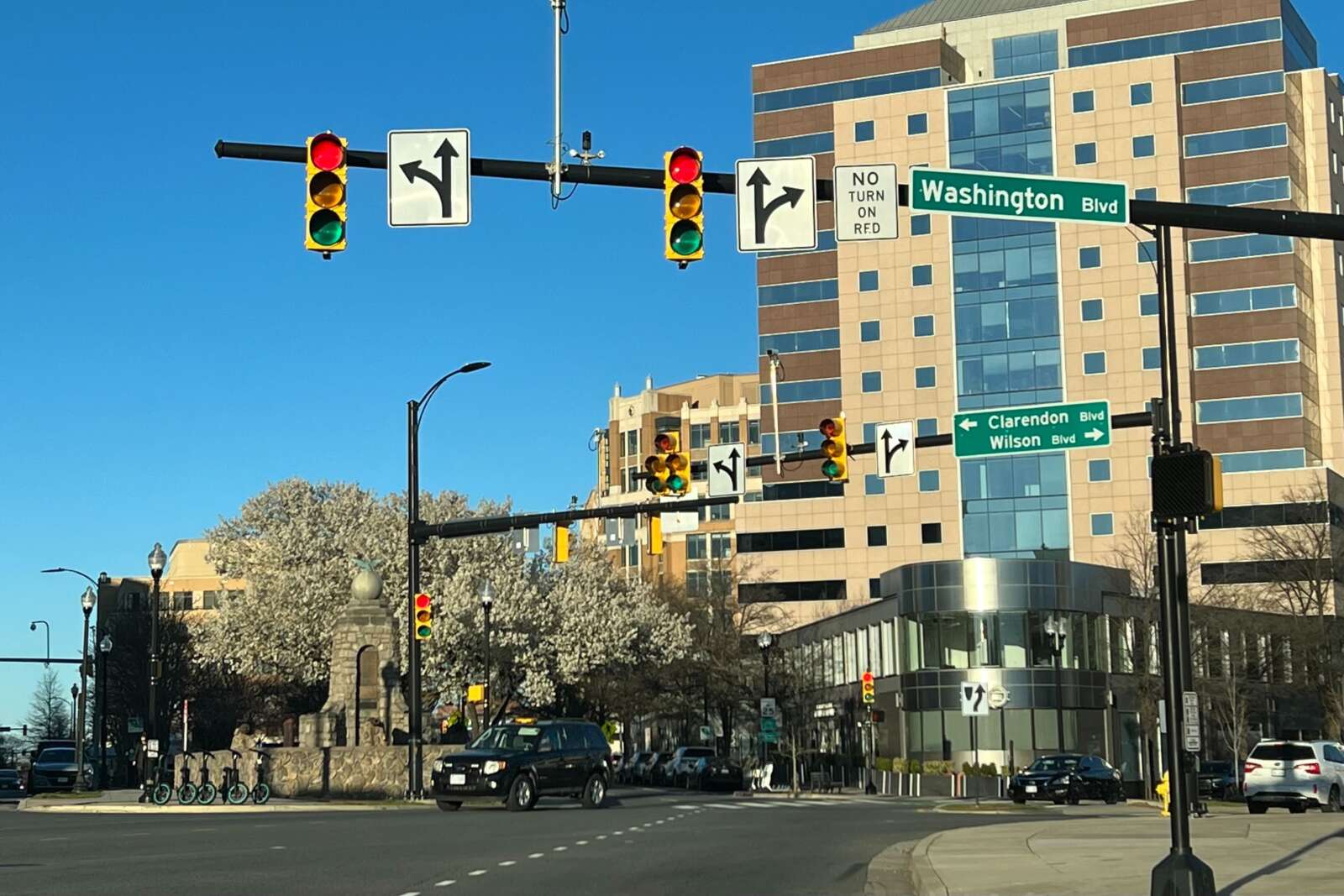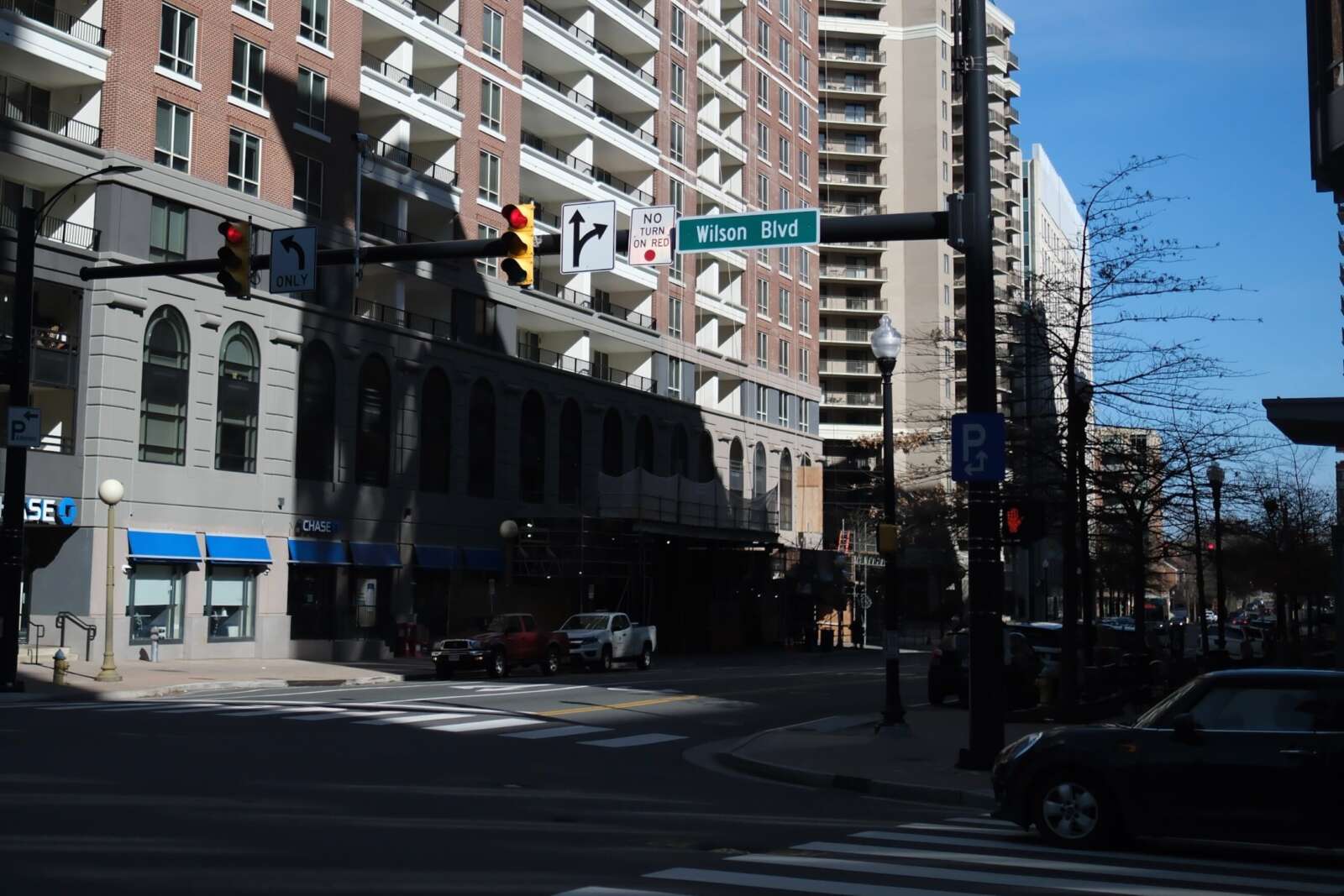More signs preventing right turns at red lights are going up around Arlington County to reduce crashes.
They were added to long stretches of major arterial streets, including Columbia Pike and Wilson Blvd. The county has concurrently reprogrammed walk signals to give pedestrians a head start crossing the street.
These changes are being made to eliminate crashes that are fatal or result in serious injuries, the aim of its two-year-old traffic safety initiative known as Vision Zero.
“This is a win for pedestrian safety benefit,” said Chris Slatt, a member of Sustainable Mobility for Arlington, which has advocated for more of no-turn-on-red signs in areas with many pedestrians. “You would want to be safe to walk and not have to worry about driving through crosswalk.”
Some drivers have anecdotally reported congestion and longer idling times to ARLnow.
“Seems like these signs cause a lot of cars to sit and idle at intersections longer than they used to,” notes one tipster. “They also generally gum up traffic.”
County documents note there have been safety benefits seen in areas with high pedestrian volumes. Additionally, a focus group of elderly adults appreciated the red light restrictions.
The county’s view is that any reasonable trade-off is worth it.
“Although traffic may slightly increase at times due these safety interventions, the trade-off is a safer environment for our most vulnerable users — pedestrians and bicyclists,” Dept. of Environmental Services spokeswoman Katie O’Brien said.
During Vision Zero’s second year, per a report, the county has been adding no turn on red signs on:
- Columbia Pike from the county line to Washington Blvd
- Fairfax Drive from N. Glebe Road to N. Kirkwood Dr
- Clarendon Blvd from N. Highland Street to Ft. Myer Drive and Wilson Blvd
- Wilson Blvd from N. Glebe Road to Fort Myer Drive
Year 2 of Arlington’s Vision Zero plan wraps up this spring.
The county says it has also grown the number of signalized intersections with a 3-7 second head start for pedestrians from 31 to 77 during Year 2. Studies show this change can reduce pedestrian-vehicle collisions by up to 60%.
As of March 2022, the county had no-turn-on-red signs at 147 approaches — each point of an intersection — after adding signs at 35 approaches in Year 1 of Vision Zero, per a May report.
Priority intersections for these changes include those with many pedestrians and bicyclists, restricted sight distance and a history of turn-related crashes, according to a “Vision Zero toolkit” of traffic safety treatments.
Arlington joins other states and municipalities, including D.C., phasing out the right-on-red at busy intersections. A number of studies have shown right on red decreases safety and restrictions improve safety for pedestrians and cyclists.
"Washington, D.C., will end most right-on-red turns by 2025. Already, the state of Hawaii has prohibited them on a tourist-dense stretch of road in Honolulu. The city of Berkeley in California is considering banning right on red at all intersections." https://t.co/zF0etmTtTr
— The War on Cars (@TheWarOnCars) March 10, 2023
Right on red was legalized 50 years ago to prevent idling and save gas during an oil embargo proclaimed by oil-exporting Arab countries, according to the county. The Energy Policy and Conservation Act of 1975 required states to allow right turns on red to receive certain federal funds.
“Unfortunately, the country has been experiencing the trade-offs of right on red turns ever since,” the county said in the Vision Zero toolkit.
The county also notes that the turn-on-red can cause backups into the intersection if drivers have to stop soon after turning. Eliminating them, meanwhile, helps to reduce crashes caused by short sightlines.
“As a driver looking to their left for oncoming traffic, they are far less likely to see pedestrians or bicyclists approaching from the right,” the county toolkit says. “Injuries and fatalities associated with right on red turns disproportionately involve pedestrians and bicyclists.”
For drivers, one tradeoff of removing them may be travel time.
“Most lights are 20-30 [seconds] and been seeing the it takes usually 15-20 seconds for crossers to get across, leaving 10 [seconds] about to get a huge backup of cars through which most do not make,” the tipster said. “And if you get the late crosser then you might get [two] cars through while backing up more and more cars.”
ARLnow asked if the county projected or studied whether no right on red would increase congestion and whether it will collect data and analyze how the change impacts traffic. The county’s Vision Zero toolkit recommends studying impacts such as vehicle operations.
In response, O’Brien said the county does not currently have data on congestion or behavioral impacts. She added, however, that Vision Zero is a data-driven process.
“Prior to any roadway safety enhancements, our team looks at crash, traffic, and other data to determine any opportunities for improvements,” she said. “We do monitor roadway changes to make sure they are working properly and as intended.”



